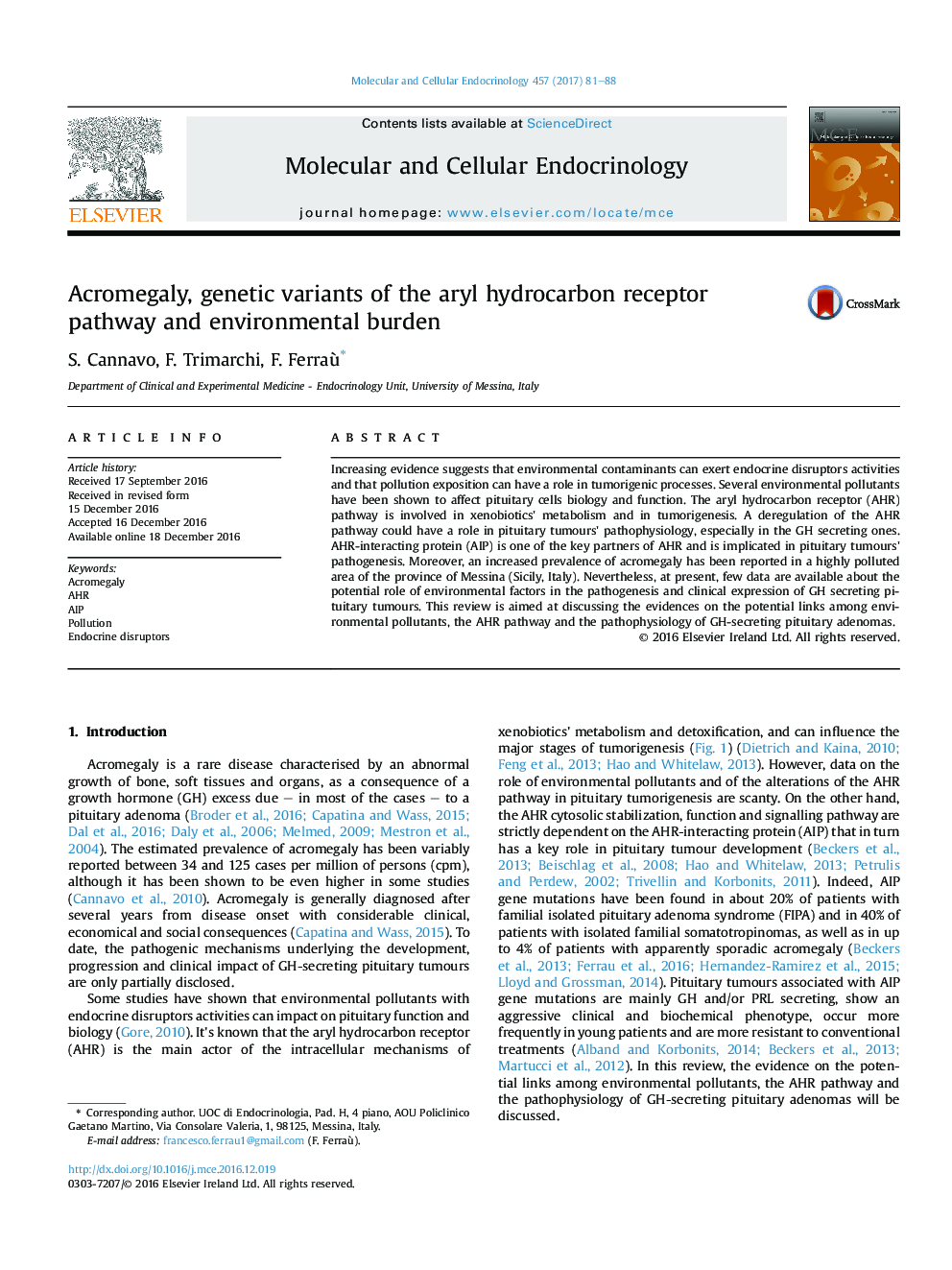| Article ID | Journal | Published Year | Pages | File Type |
|---|---|---|---|---|
| 5533988 | Molecular and Cellular Endocrinology | 2017 | 8 Pages |
â¢AHR is involved in cells' detoxification mechanisms and in tumorigenic processes.â¢Endocrine-disrupting environmental compounds can affect pituitary function via AHR.â¢The AHR key partner is AIP, which is involved in pituitary tumorigenesis.â¢Pollutants exposition, along with AHR/AIP variants, impacts on acromegaly features.
Increasing evidence suggests that environmental contaminants can exert endocrine disruptors activities and that pollution exposition can have a role in tumorigenic processes. Several environmental pollutants have been shown to affect pituitary cells biology and function. The aryl hydrocarbon receptor (AHR) pathway is involved in xenobiotics' metabolism and in tumorigenesis. A deregulation of the AHR pathway could have a role in pituitary tumours' pathophysiology, especially in the GH secreting ones. AHR-interacting protein (AIP) is one of the key partners of AHR and is implicated in pituitary tumours' pathogenesis. Moreover, an increased prevalence of acromegaly has been reported in a highly polluted area of the province of Messina (Sicily, Italy). Nevertheless, at present, few data are available about the potential role of environmental factors in the pathogenesis and clinical expression of GH secreting pituitary tumours. This review is aimed at discussing the evidences on the potential links among environmental pollutants, the AHR pathway and the pathophysiology of GH-secreting pituitary adenomas.
Graphical abstractDownload high-res image (127KB)Download full-size image
